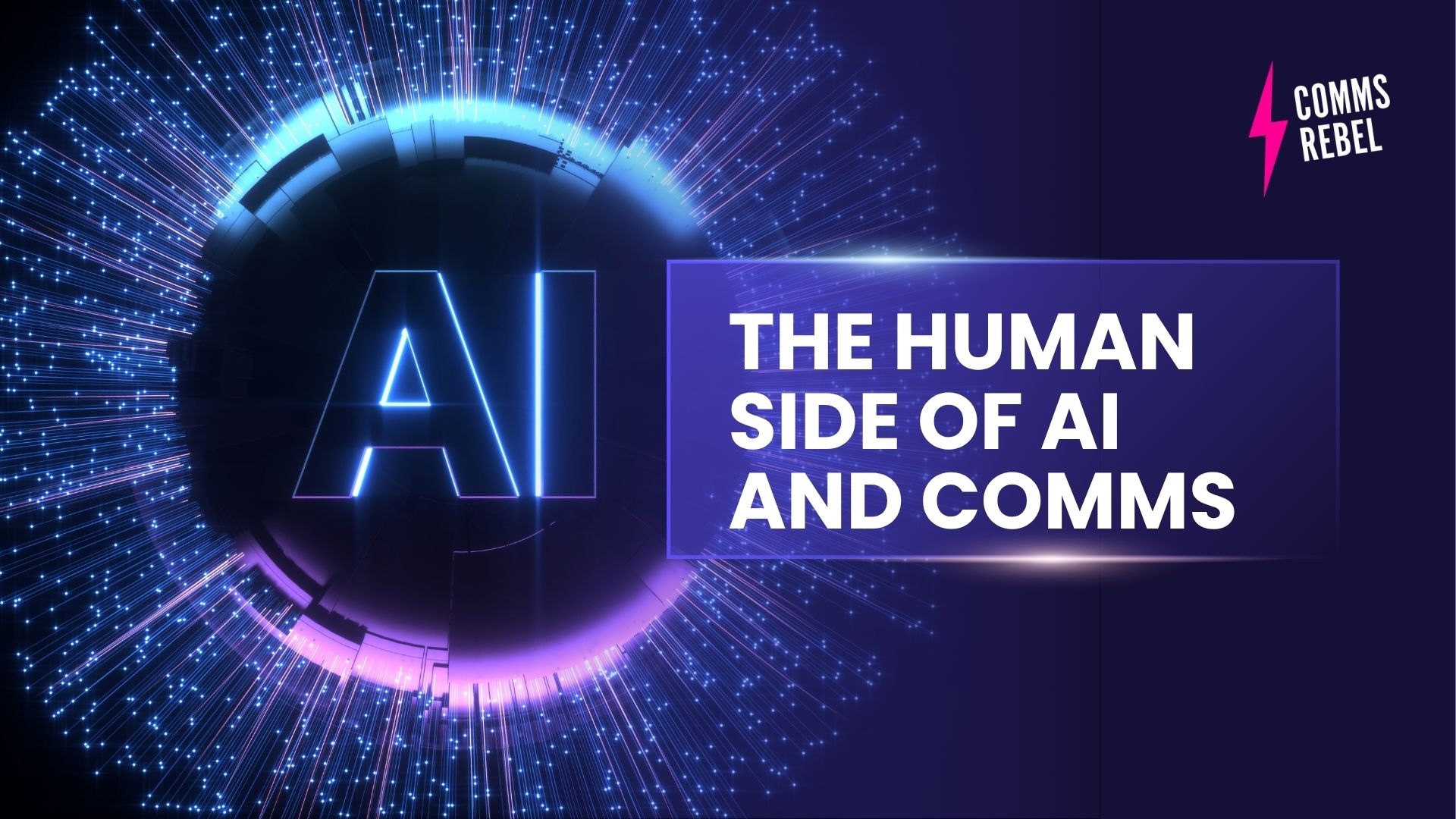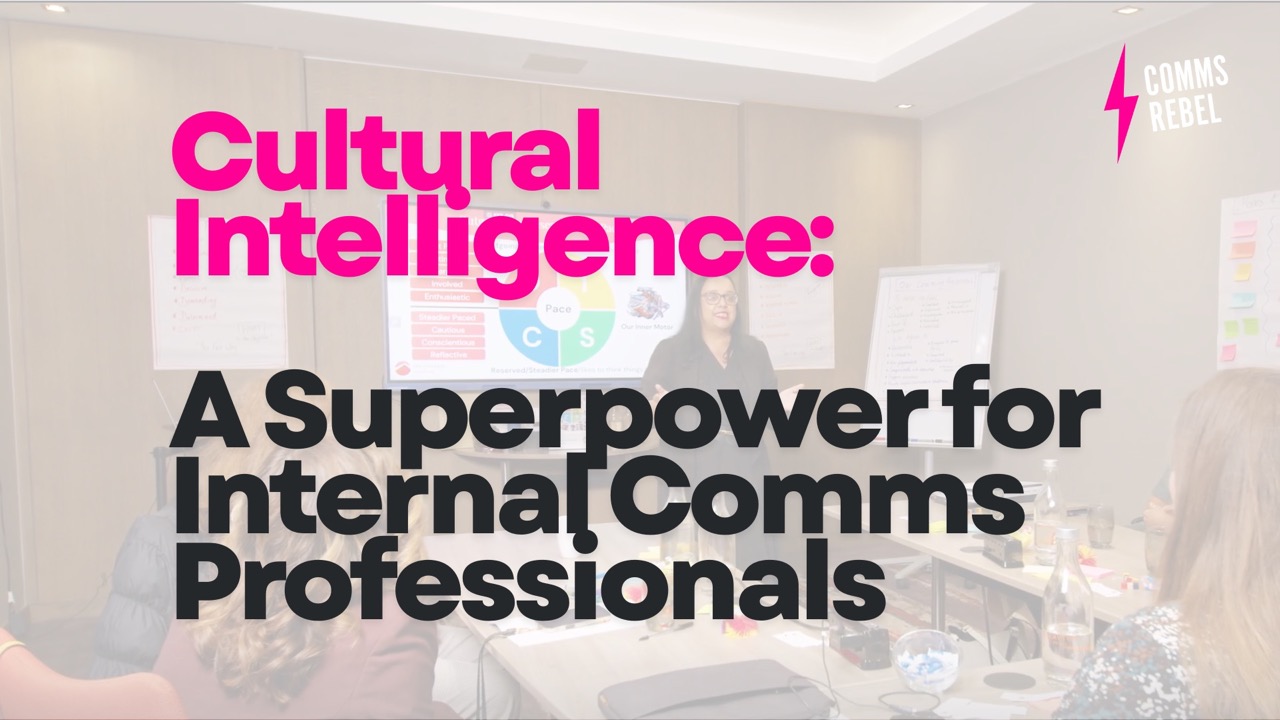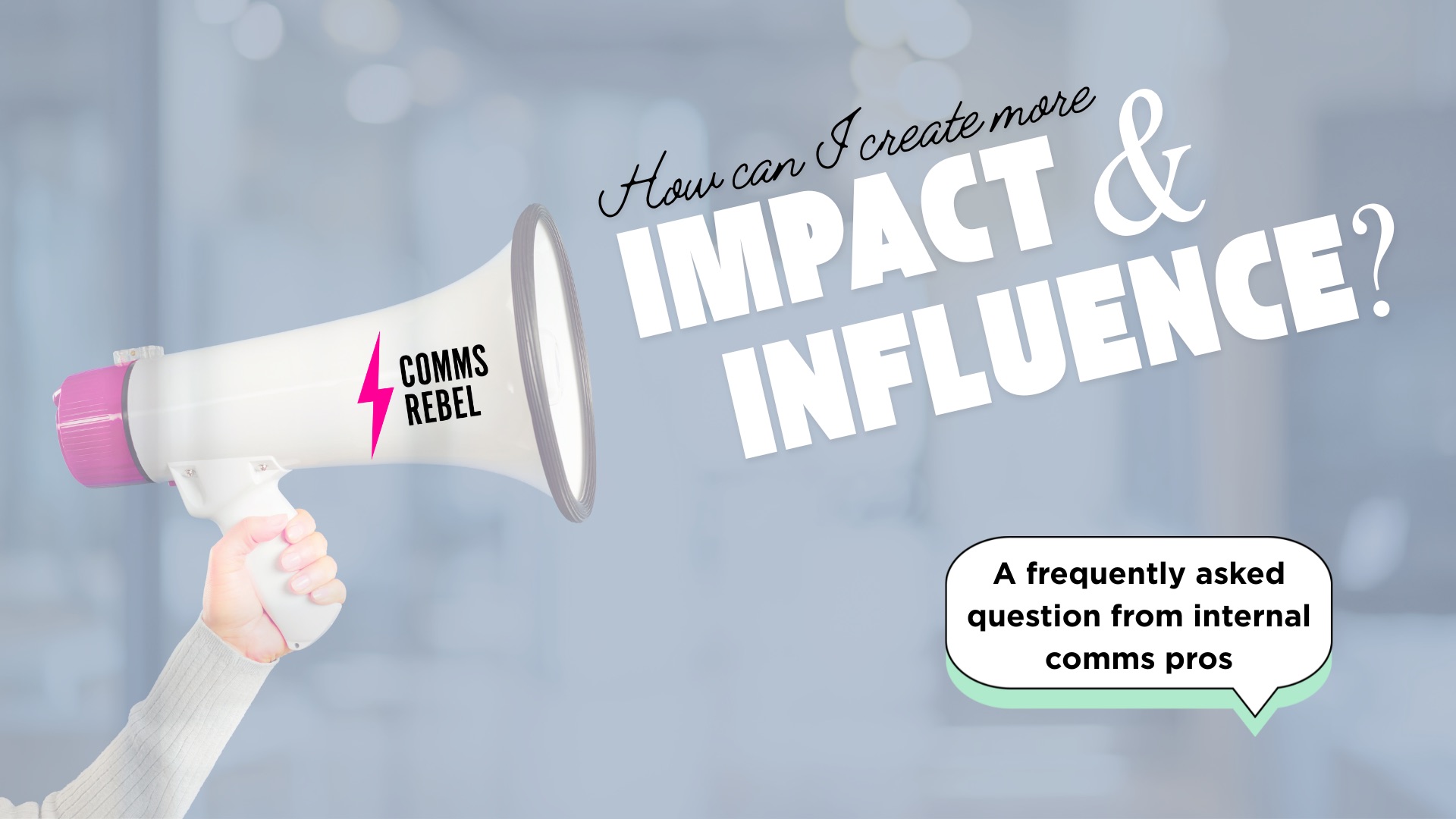We’re in the thick of it now. AI is transforming how we work, and internal communication is no exception.
From instant content generation to smarter analytics and automated workflows, the tools at our fingertips are undeniably powerful. They promise speed, scale, and slicker operations. And honestly? Many of them deliver.
But as the buzz around AI continues to grow, there’s something we mustn’t lose sight of: the human side of communication.
Because while technology can help us say more, faster, it can’t (and shouldn’t) replace the thought, empathy, and trust required to truly connect.
In a time when AI can do the doing, it’s our job as comms professionals and people leaders to stay focused on what really matters: relevance, authenticity, and human connection.
How to balance the best of both…
1. Use AI to draft… But edit for tone, context, and care
Let’s be honest: AI is brilliant at the blank page.
It can help generate a first draft of that policy update, newsletter intro, or FAQ. It can even rewrite long-form copy into bite-sized versions for different channels. And for time-poor teams, that’s a gift.
But AI doesn’t understand tone in the way humans do. It can’t read the room, sense the mood, or tailor a message to what people might be feeling.
That’s where we come in.
Always apply a human lens before anything goes live:
- Does this sound like us?
- Is the tone appropriate for the context?
- Would I say this to someone face-to-face?
- Have I been clear?
Automation may give you speed but connection comes from care.
2. Let AI do the admin… So you can focus on storytelling
Here’s where AI really shines: time-saving.
It can summarise meeting transcripts. Categorise employee feedback. Generate alt text. Translate messages for global audiences. Spot patterns in surveys. Pull together content calendars. The list goes on.
All of that frees you up to do the work that really moves the needle: strategy, creativity, storytelling, and connection.
The parts only humans can do.
Let the robots take care of the repetitive stuff and reinvest your time in the things that build meaning and trust:
- Crafting a great narrative around change
- Interviewing employees for a culture campaign
- Coaching leaders to communicate more openly
- Designing messages that feel like they came from a person, not a bot
That’s where we bring the real value.
3. Be aware of bias… Because oversight still matters
One of the biggest risks with AI? It can sound confident and still be completely wrong.
Worse, it can reinforce harmful biases without even meaning to.
AI tools are only as good as the data they’ve been trained on. And in many cases, that data doesn’t reflect the diversity or lived experiences of your workforce.
That’s why human oversight is non-negotiable. We need to:
- Sense-check outputs for inclusivity and accuracy
- Ask where the information is coming from
- Review tone and language from a DEI lens
- Call out anything that feels “off” even if it technically makes sense
Trust is hard-won and easily lost. People need to know that what they’re reading has been shaped, checked, and cared for by a human who understands them.
4. Build a comms culture… That puts empathy first
The most powerful internal comms aren’t just clear. They’re compassionate.
AI doesn’t have emotions. But your people do. And the more tech we bring into the workplace, the more we need to double down on empathy.
That means:
- Listening more than you broadcast
- Acknowledging how people might be feeling (especially during change)
- Sharing messages in a human voice, not corporate speak
- Creating space for feedback, not just output
The heart of internal communication has always been about connection. The technology we use should enhance that, not replace it.
Tech helps us scale. Humanity helps us connect.
The future of internal communication isn’t AI or empathy. It’s both.
Use the tools. Embrace the innovation. Let AI help you work smarter, not harder. But don’t lose what makes communication matter in the first place – human understanding, emotional intelligence, and the ability to truly connect.
Because your employees aren’t data points. They’re people. And people remember how you made them feel, not just what you said.
So ask yourself before sending your next message:
- Is it helpful?
- Is it human?
- Is it kind?
That’s what great communication looks like, in any age.
We help you build more confident workplaces through effective internal communications so people and organisations thrive. Get in touch for a free discovery call.


